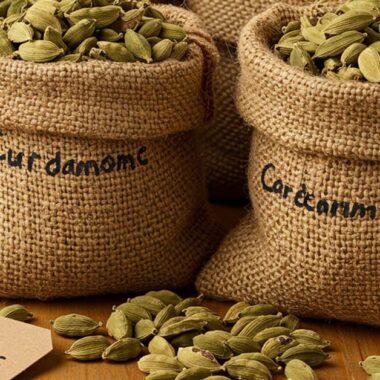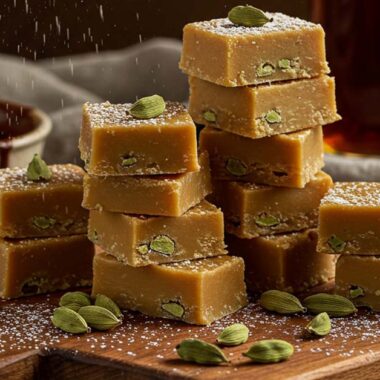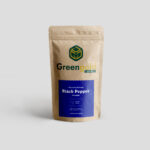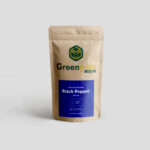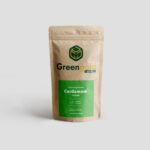When we think of Japanese cuisine, we usually associate it with delicate flavors, fresh seafood, and umami-rich ingredients like soy sauce, miso, and wasabi. But you might be surprised to learn that cardamom—a spice more commonly linked to Indian, Middle Eastern, and European cooking—has also made its way into some Japanese dishes! 🌿
Cardamom, known for its warm, citrusy, and slightly sweet flavor, adds a unique twist to the typically subtle Japanese flavor profile. Let’s explore how cardamom has found its place in Japanese cuisine, adding depth and complexity to both sweet and savory dishes! 🍣✨
🍡 1. Cardamom in Japanese Sweets (Wagashi)
Wagashi, the traditional Japanese sweets often served with tea, are known for their delicate flavors and minimal sweetness. Cardamom is sometimes used in wagashi recipes, especially in sweet bean paste fillings or mochi (sticky rice cakes). The aromatic spice provides an unexpected floral and slightly spicy note that complements the sweetness of the red bean paste or matcha in the wagashi. 🌿
Key Ingredients:
- Sweet bean paste (anko)
- Mochi rice
- Ground cardamom 🌿
- Sugar
🍜 2. Cardamom in Japanese Curry (Kare)
Japanese curry is a comforting dish that’s loved by many for its rich, thick, and mildly spicy flavor. While traditional curry powder contains ingredients like turmeric and coriander, cardamom is sometimes included to add a subtle warm and fragrant note to the curry base. The cardamom balances the sweetness of the simmered vegetables and umami flavors from the meat or fish in the curry. It’s an unexpected yet delicious twist on this hearty comfort food. 🍛
Key Ingredients:
- Curry powder
- Carrots, potatoes, onions
- Meat (chicken, pork, or beef)
- Ground cardamom 🌿
- Soy sauce and broth
🍹 3. Cardamom-Infused Japanese Cocktails
Japanese cocktails are renowned for their elegance and balance. One creative use of cardamom in Japan is its inclusion in cocktails, particularly in whiskey-based drinks or highballs. The spicy and floral notes of cardamom complement the smoky flavor of Japanese whiskey or the refreshing quality of sake. A cardamom-infused highball or whiskey cocktail offers a unique twist on the traditional Japanese drinks, making them perfect for those seeking a complex, aromatic experience. 🥃
Key Ingredients:
- Japanese whiskey or sake
- Ice
- Fresh cardamom pods or ground cardamom 🌿
- Club soda or ginger ale
🍰 4. Cardamom in Japanese Tea Cakes (Chakai)
Japanese tea cakes or chakai are often enjoyed with matcha tea and feature flavors like chestnut, sweet potato, or bean paste. Cardamom can be added to the batter or icing of these delicate treats to enhance their sweetness and provide a subtle spicy warmth. The aromatic quality of cardamom pairs beautifully with the earthy matcha and balances the sweetness of the cake or filling. 🍵
Key Ingredients:
- Matcha powder
- Cake flour or rice flour
- Ground cardamom 🌿
- Butter and sugar
🍚 5. Cardamom in Japanese Rice Dishes
In Japan, rice is a staple in most meals, and sometimes cardamom is added to rice dishes for an aromatic twist. Cardamom pairs well with sushi rice or steamed rice, infusing the rice with a subtle floral, citrusy flavor that enhances its natural sweetness. You may even find cardamom in some pilaf-style rice dishes served alongside seafood or vegetables in Japanese home cooking. 🍚
Key Ingredients:
- Sushi rice or short-grain rice
- Water
- Ground cardamom 🌿
- Mirin or soy sauce
🍨 6. Cardamom in Japanese Ice Cream (Kōbō-ame)
Japanese ice cream comes in a variety of unique flavors, such as matcha, black sesame, and sweet potato. Some modern Japanese ice cream makers have started experimenting with cardamom to create flavorful, aromatic ice cream. Cardamom’s spicy-sweet flavor pairs wonderfully with cream-based ice creams, adding a fragrant note that balances the richness of the dessert. 🍦
Key Ingredients:
- Heavy cream
- Milk
- Sugar
- Ground cardamom 🌿
- Egg yolks (optional)
🍲 7. Cardamom in Japanese Soup (Miso or Shoyu)
Japanese soups like miso soup and shoyu (soy sauce-based) soups often rely on the umami from miso paste or dashi broth. However, cardamom can occasionally be found in more experimental soups, providing a warming, aromatic kick. Adding cardamom to miso soup or ramen broth can elevate the overall complexity of the dish, adding an unexpected spice that complements the salty, savory elements of the soup. 🍲
Key Ingredients:
- Miso paste or soy sauce
- Dashi broth
- Tofu, vegetables, and mushrooms
- Ground cardamom 🌿
🧘♀️ Cardamom in Japanese Wellness: A Healing Spice
In addition to its culinary uses, cardamom is also incorporated into wellness practices in Japan. Cardamom tea is sometimes consumed for its digestive benefits, and its relaxing properties make it a wonderful addition to stress-relief rituals or detox routines. 🌿✨
🌿 Elevate Your Japanese Dishes with Premium Cardamom 🌱
Looking to incorporate cardamom into your Japanese-inspired dishes? Check out Green Gold Guide’s premium cardamom products for top-quality cardamom to add to your culinary creations. 🌿
Conclusion 🌟
Though cardamom might not be a traditional Japanese spice, its aromatic and floral qualities are a perfect complement to the delicate, subtle flavors of Japanese cuisine. Whether it’s enhancing sweet treats, spicing up a savory dish, or adding a touch of elegance to a cocktail, cardamom is a versatile ingredient that can add a unique twist to your Japanese culinary adventures. 🍣🌿

